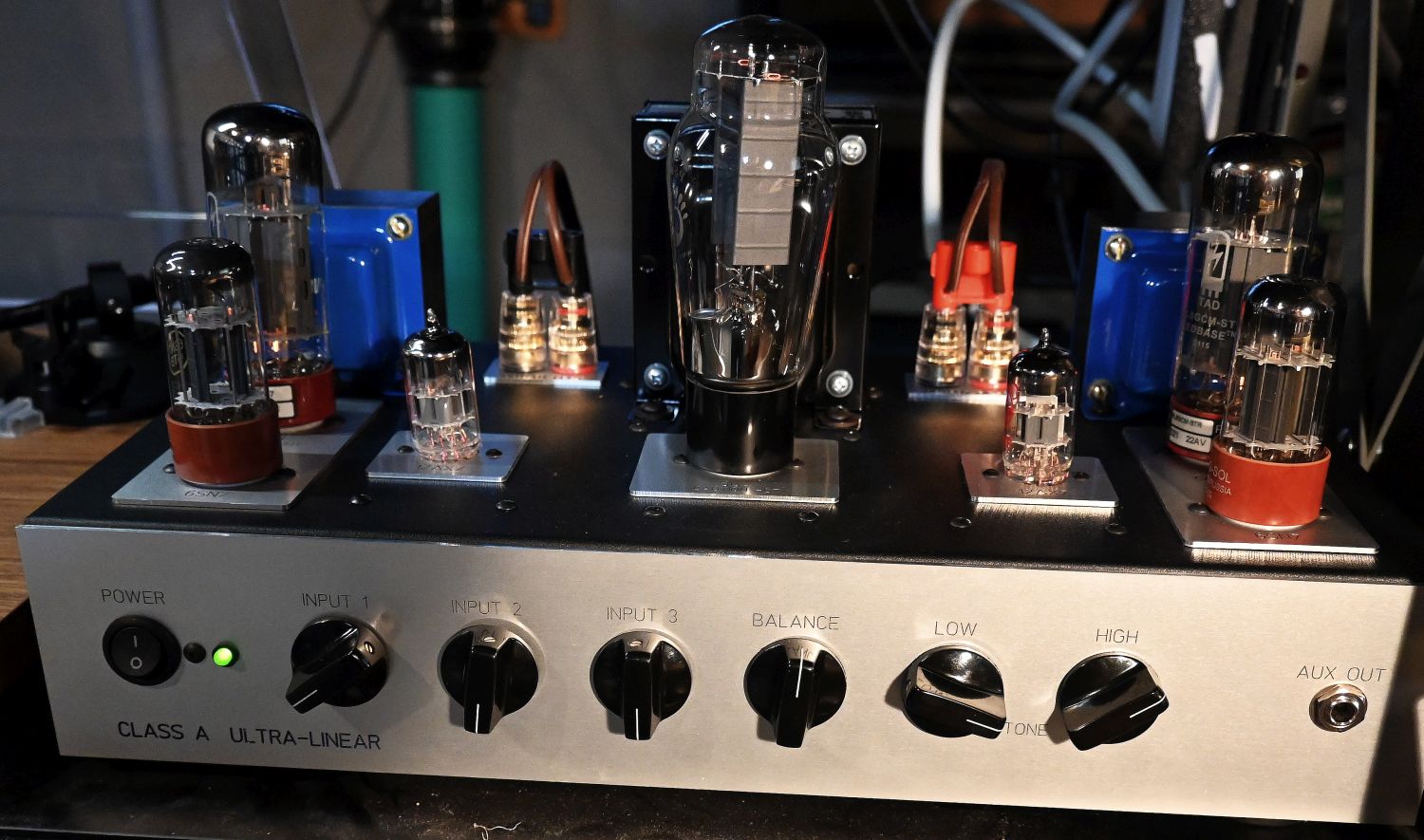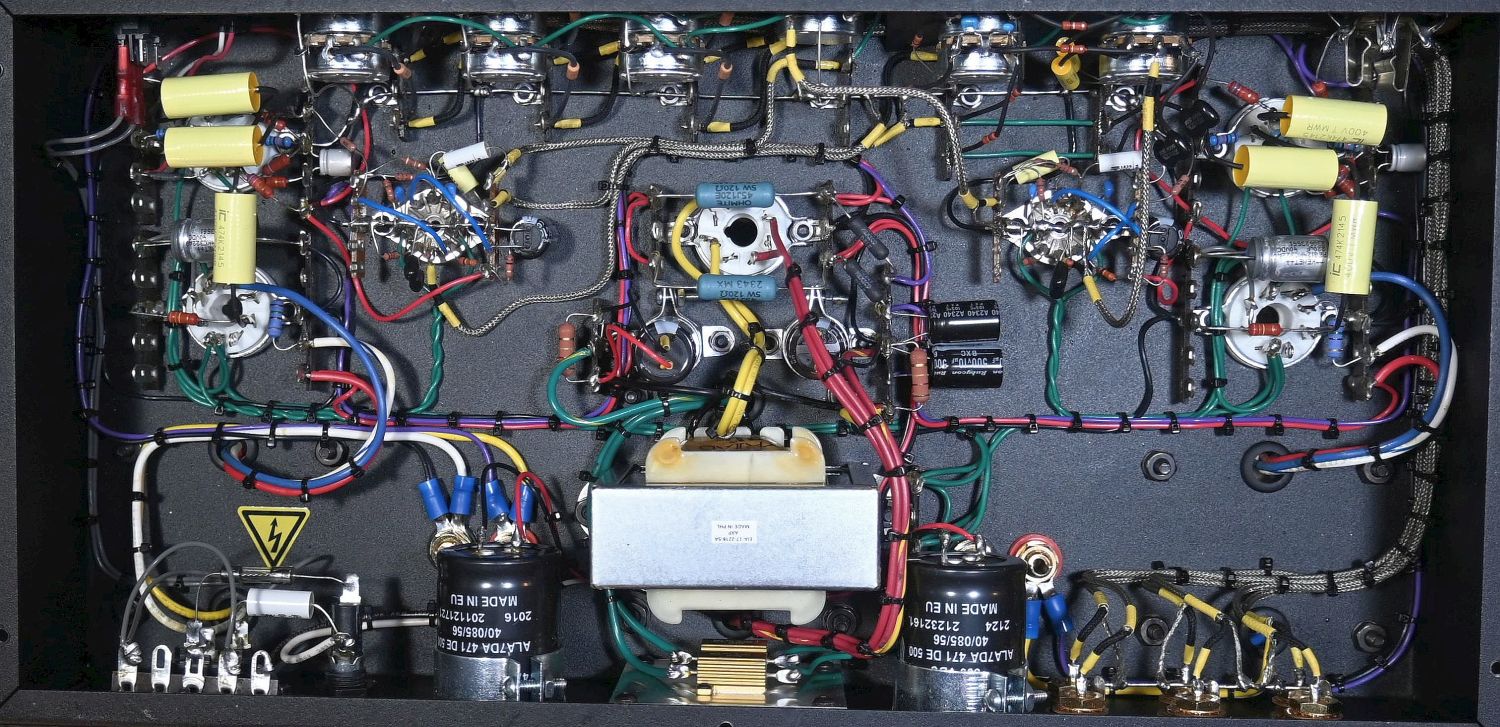
.


This website contains information related to the home building of vacuum tube amplifiers primarily intended for the novice, including a free download of the book Vacuum Tube Amplifier Basics. This site is owned by EJ Jurich, author of the book.
Vacuum tubes have a sound unique to the characteristics of vacuum tube amplification. It might be described as more natural due to the harmonic content of the amplified signal. In particular, when operated into the saturation region near full volume of the amplifier.
For the electronic hobbyist, building a vacuum tube amplifier can be a fun project. Components are big and much easier to work with than tiny solid-state components. With careful attention to detail, the finished amplifier can be quite impressive-looking.

From the standpoint of the electronic hobbyist, assembling a vacuum tube amplifier using point-to-point hand wiring has some advantages. It is not necessary to layout and have custom printed circuit boards made.

If you find it necessary to make a circuit change, you can simply unsolder connections, something difficult to do with printed circuit boards. The style of the finished amplifier is limited only by your imagination. It is possible to have custom panels made for a professional finished look. The hand-built amplifier pictured above is a retro 1950s style.
Point-to-point hand wired

This is typical of point-to-point hand wiring. It is the inside of the amplifier pictured above. Using cable ties, wires are grouped together into cable bundles.
For the electronic novice, a single-ended (one tube) Class A output is probably the easiest design to implement. All the preamplifier stages will also be Class A. If you do not feel confident designing circuits, there are amplifier circuits available online. Also, there are amplifier projects at the back of the free book download below.
This project is to see if a four-watt-per-channel amplifier using 6SN7s as output tubes is practical.
6SN7 Amplifier Project
Last update - 10/10/2025
Using sound pressure levels to determine amplifier output wattage that produces sound levels suitable for home audio systems.
Why It Makes Sense
EDN article on amplifier power

This free download of the current version of the book includes technical information from previous versions plus a more detailed example
of amplifier design and assembly. Using a concise format, 110 reference pages cover technical information that pertains to vacuum tube
circuits. Design examples take you through the steps of fabricating a traditional chassis layout and the build of a Class A stereo amplifier
(pictured on the book cover).
More information
Copyright notice
Format: PDF Document/eBook
ISBN: 9798218611682
File size: 30 MB
View or download the book

This current version of the book includes technical information from previous versions plus a more detailed example of amplifier
design and assembly. Using a concise format, 110 reference pages cover technical information that pertains to vacuum tube circuits.
Design examples take you through the steps of fabricating a traditional chassis layout and the build of a Class A stereo amplifier
(pictured on the book cover).
More information
Copyright notice
Format: PDF Document/eBook
ISBN: 9798218611682
File size: 30 MB
View or download the book
Russell O Hamm paper, tubes versus transistors Class D, Class A & Class AB Loudspeaker distortion Selecting capacitors for the best performance Amplifier damping factor Push-pull balance - W T Cocking Cathode follower output Amplifier design for tube rolling 12AT7 Balanced input Half-watt 6SN7 headphone amplifier

Danger High Voltage
be careful where you put your hands
This is the home page for EJ Jurich
author of the book
Vacuum Tube Amplifier Basics
There are those who point to distortion figures of vacuum tubes compared to solid-state amplification. Considering that most speaker systems produce 2% distortion or higher depending on volume levels, ultra-low amplifier distortion figures are superfluous. Beyond the realm of equipment test results, it is an area more appropriately left to the field of psychoacoustics. Sound reproduction preference is a matter of the listener's perception.
.